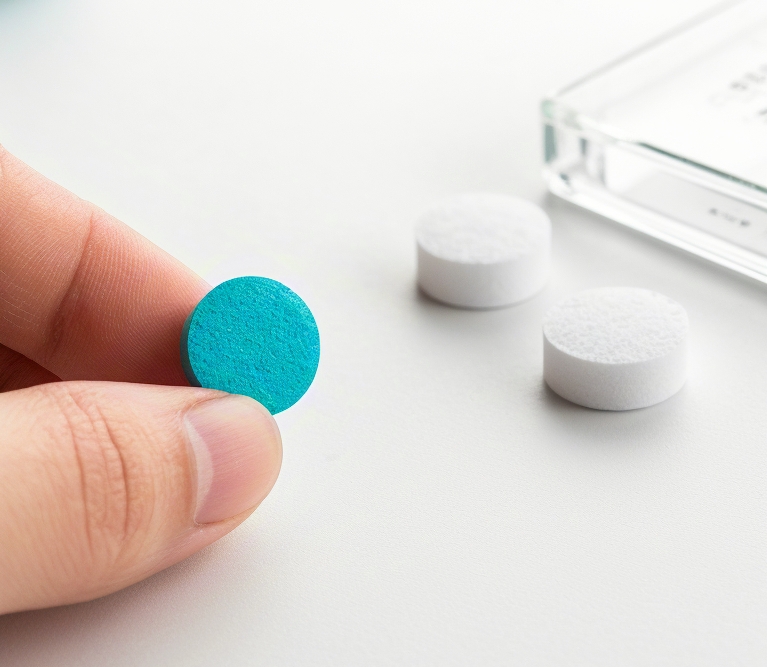Pharmaceutical excipients are excipients and adjuncts used in the production of drugs and prescription, and are an important part of pharmaceutical preparations. As a natural polymer derived material, cellulose ether is biodegradable, non-toxic and inexpensive. Cellulose ether, such as sodium carboxymethyl cellulose, methyl cellulose, hydroxypropyl methyl cellulose, hydroxypropyl cellulose, hydroxyethyl cellulose and ethyl cellulose, has important application value in pharmaceutical excipients. At present, the products of most domestic cellulose ether enterprises are mainly used in the middle and low-end areas of the industry, and the added value is not high, and the industry needs to transform and upgrade and improve the high-end application of products.
Pharmaceutical excipients play a very important role in the development and production of preparation molding. For example, in sustained-release preparations, polymer materials such as cellulose ether have been widely used as pharmaceutical excipients in sustained-release pellets, various skeleton sustained-release preparations, coated sustained-release preparations, sustained-release capsules, sustained-release film, resin sustained-release preparations and liquid sustained-release preparations. In this system, polymers such as cellulose ether are generally used as drug carriers to control the release rate of drugs in the human body, that is, they are required to be slowly released in the body at a set rate within a certain time range to achieve the purpose of effective treatment.
Hydroxypropyl methyl cellulose
Hydroxypropyl methyl cellulose (HPMC) is a non-ionic cellulose mixed ether made from cotton and wood by alkalization, epoxide and chloromethane etherification. It is odorless, tasteless, non-toxic, soluble in cold water and gelatinized in hot water. Hydroxypropyl methyl cellulose is a cellulose mixed ether variety whose output, dosage and quality have been rapidly increasing in the past 15 years in China. It is also one of the most widely used medicinal excipients at home and abroad, and has a history of nearly 50 years as a medicinal excipient. At present, the application of HPMC is mainly reflected in the following five aspects:
One is as a binder and disintegrator. HPMC as a binder can make the drug easy to wet, and its own water absorption can expand hundreds of times, so it can significantly improve the dissolution or release of the tablet. HPMC has a strong viscosity, for the texture of loose or brittle raw materials can enhance its particle viscosity, improve its compressibility. HPMC low viscosity can be used as a binder and disintegrator, high viscosity only as a binder.
The second is as a slow and controlled release material for oral preparations. HPMC is a hydrogel skeleton material commonly used in sustained-release preparations. HPMC with low viscosity grade (5 ~ 50mPa·s) can be used as a binder, viscosifier and suspension aid, and HPMC with high viscosity grade (4000 ~ 100000mPa·s) can be used as a blocker for preparing mixed material skeleton sustained-release tablets, sustained-release capsules and hydrophilic gel skeleton sustained-release tablets. HPMC can be dissolved in gastric and intestinal fluid, and has the advantages of good compressibility, good fluidity, strong drug loading ability and the release characteristics are not affected by pH, etc. HPMC is a very important hydrophilic carrier material in the sustained-release preparation system. It is commonly used as the hydrophilic gel skeleton and coating material in the sustained-release preparation, and is used in the gastric floating preparation and the sustained-release drug film adjuvant.
Third, it is used as coating film forming agent. HPMC has good film formation, the film formed by it is uniform, transparent, tough, and not easy to stick during production, especially for easy moisture absorption and unstable drugs, using it as an isolation layer can greatly improve the stability of the drug and prevent film discoloration. HPMC has a variety of viscosity specifications, if properly selected, the quality and appearance of the coated sheet are better than other materials, and its common concentration is 2% to 10%.
Fourth, it is used as capsule material. In recent years, with the frequent outbreak of animal outbreaks around the world, compared with gelatin capsules, plant capsules have become the new darling of the pharmaceutical and food industry. Pfizer has successfully extracted HPMC from natural plants and prepared VcapTM plant capsules. Compared with traditional gelatin hollow capsules, plant capsules have the advantages of wide adaptability, no cross-linking risk and high stability, relatively stable drug release speed, small individual differences, and can not be absorbed after disintegration in the human body, and can be discharged with excreta. In terms of storage conditions, after a large number of tests, it is almost not brittle under low humidity conditions, the capsule shell properties are still stable under high humidity, and the indexes of plant capsules under extreme storage conditions are not affected. With people’s understanding of plant capsules, as well as the change of the concept of public medicine at home and abroad, the market demand for plant capsules will grow rapidly.
Fifth, as a suspension aid. Suspension liquid preparation is a commonly used dosage form in clinical practice. It is a heterogeneous dispersion system in which refractory solid drugs are dispersed in liquid dispersion medium. The stability of the system determines the quality of the suspension liquid preparation. HPMC colloidal solution can reduce the interfacial tension of solid and liquid, reduce the surface free energy of solid particles, and stabilize the heterogeneous dispersion system. It is an excellent suspension aid. HPMC is used as a thickening agent for eye drops with a content of 0.45% ~ 1.0%.

